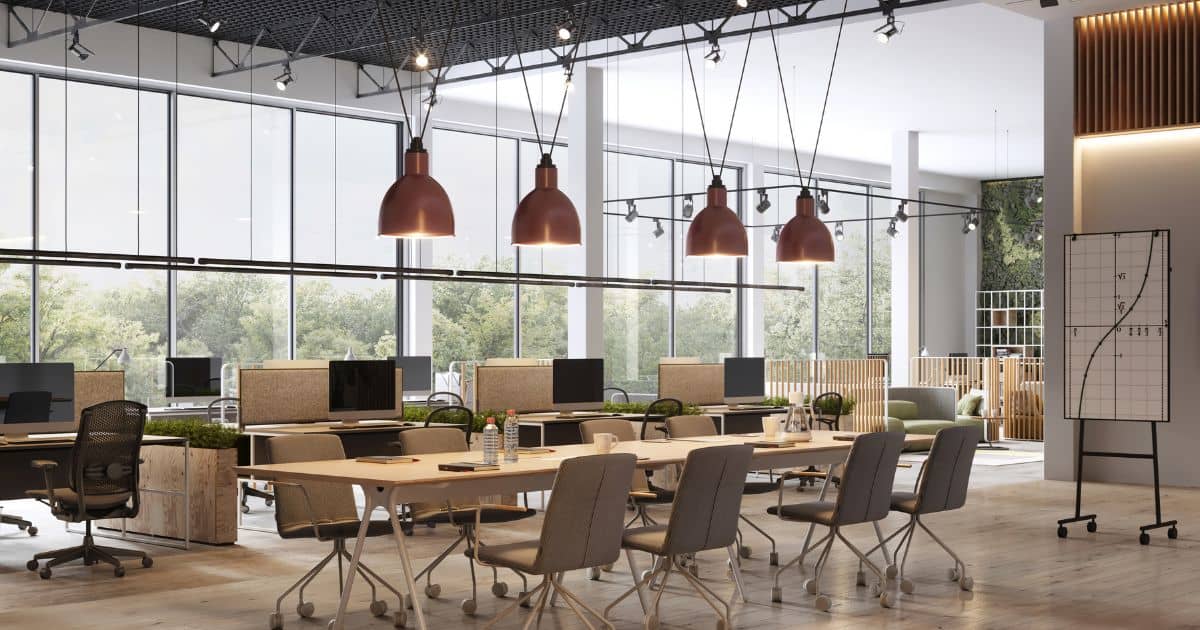
The best office lighting for employee productivity
In the modern workplace, where the demands for efficiency and creativity are ever-increasing, the role of environmental factors in enhancing productivity cannot be understated. Among these factors, lighting stands out as a critical element that significantly influences how employees perform their tasks. Adequate lighting in an office setting is not merely about ensuring visibility; it directly affects concentration, mood, and overall well-being, which are all essential components of productivity. Poor lighting can lead to eye strain, headaches, and fatigue, ultimately resulting in decreased performance and increased error rates. Conversely, optimal lighting can enhance cognitive function, improve focus, and boost morale, creating a more conducive environment for productive work.
In this story
Overview of Article Structure
This article delves into the intricacies of office lighting and its profound impact on employee productivity. It begins by exploring the different types of lighting commonly used in office spaces, such as natural, artificial, task, and ambient lighting. Each type offers unique benefits and challenges, and understanding these can aid in selecting the most appropriate lighting solutions for varying work environments. Following this, the article examines how lighting affects focus and cognitive performance, drawing upon recent studies and expert opinions to provide evidence-based insights. The discussion then shifts to the influence of lighting on mood, highlighting the psychological and emotional implications of different lighting conditions, including considerations for Seasonal Affective Disorder (SAD).
Furthermore, the article addresses the relationship between lighting and efficiency, emphasizing the importance of energy-efficient lighting solutions and their economic benefits. Real-world examples, including case studies of innovative lighting implementations in coworking spaces like Monteco in Budva, will illustrate practical applications. Finally, the article offers actionable recommendations for optimizing office lighting, guiding readers in making informed decisions that enhance productivity and foster a healthier work environment. Through this comprehensive exploration, readers will gain a deeper understanding of how strategic lighting choices can transform their workspaces into more productive and pleasant places to work.
Types of Office Lighting

Natural Lighting
Natural lighting, often hailed as the most beneficial lighting source, plays a crucial role in enhancing workplace productivity. Sunlight exposure is linked to improved mood, increased alertness, and better sleep quality, all of which contribute to heightened productivity. Offices that maximize natural light through large windows, skylights, or open floor plans can significantly improve employees’ well-being. Studies have shown that access to natural light can reduce eye strain and fatigue, making it easier for employees to maintain focus over long periods. In addition to its psychological benefits, natural lighting is also an energy-efficient option, helping to reduce reliance on artificial lighting and lower energy costs.
Artificial Lighting

While natural light is ideal, artificial lighting is indispensable in most office environments, especially in spaces where natural light is limited or during evening hours. Artificial lighting encompasses a variety of sources, including fluorescent, LED, and incandescent lights. LED lighting, in particular, has gained popularity due to its energy efficiency, long lifespan, and versatility in providing different color temperatures. The right artificial lighting can mimic natural daylight, which is beneficial in maintaining circadian rhythms and supporting cognitive function. However, it is crucial to choose artificial lighting that minimizes glare and flicker, as these can lead to discomfort and decreased productivity.
Task Lighting

Task lighting is a focused lighting solution designed to illuminate specific work areas, providing additional light where general office lighting may be insufficient. This type of lighting is particularly useful for tasks that require precision and detail, such as reading, writing, or computer work. Desk lamps and under-cabinet lights are common examples of task lighting that can reduce eye strain and improve concentration. Adjustable task lighting allows employees to control the intensity and direction of light, catering to individual preferences and needs. By enhancing visibility for specific tasks, task lighting contributes to reduced errors and increased efficiency.
Ambient Lighting
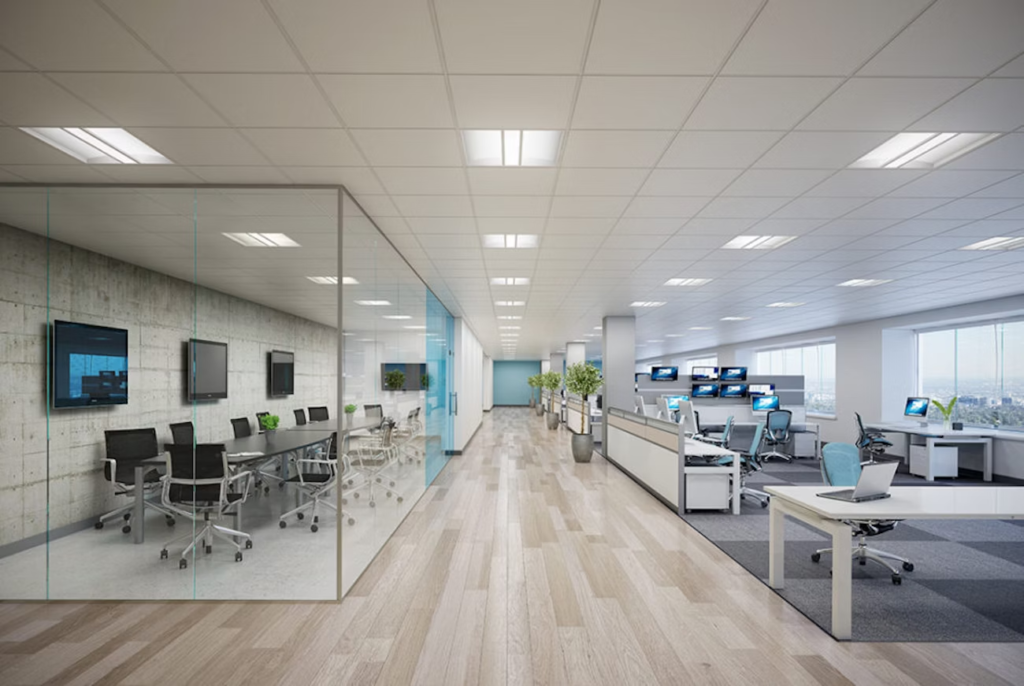
Ambient lighting is the primary source of light in an office environment, providing overall illumination that sets the tone and atmosphere of the space. It is typically achieved through ceiling fixtures, wall-mounted lights, or recessed lighting. The goal of ambient lighting is to create a comfortable and inviting environment that supports general visibility and movement throughout the office. Achieving the right balance of ambient lighting is crucial; it should be bright enough to support daily activities without being overwhelming or causing glare. Combining ambient lighting with natural, artificial, and task lighting creates a comprehensive lighting strategy that enhances productivity by addressing various needs and preferences within the workplace.
Effects of Lighting on Focus

Concentration and Cognitive Performance
Lighting is a critical factor in shaping an employee’s ability to concentrate and perform cognitive tasks effectively. The quality and type of lighting can significantly influence mental acuity, with optimal lighting conditions fostering an environment conducive to sustained focus and enhanced cognitive performance. Proper lighting reduces eye strain and fatigue, allowing individuals to engage more deeply with their work without the distraction of physical discomfort. Research suggests that exposure to natural light or artificial lighting that mimics daylight can improve cognitive functions, such as memory, problem-solving, and attention to detail. Therefore, strategically designed lighting environments can help employees maintain high levels of concentration throughout the workday, ultimately boosting productivity.
Distraction Reduction
In addition to enhancing concentration, appropriate lighting can play a pivotal role in minimizing distractions within the workplace. Poor lighting conditions, such as harsh glare or uneven illumination, can create visual discomfort, which not only distracts employees but also hampers their ability to focus on tasks at hand. Implementing the right lighting solutions, such as adjustable task lighting or indirect ambient lighting, helps create a balanced visual environment that reduces the likelihood of distraction. By minimizing glare and shadows, employees can maintain their focus on work activities without the need to constantly adjust their position or lighting sources. This reduction in visual disturbances supports a more seamless workflow and contributes to an overall increase in productivity.
Study Findings on Focus
Empirical studies offer valuable insights into the effects of lighting on focus and productivity. Research conducted by the Department of Design and Environmental Analysis at Cornell University found that workers in environments with optimized lighting reported a 2% increase in productivity, equating to an additional 15 minutes of work per day. Another study published in the Journal of Environmental Psychology highlighted that employees under LED lighting with adjustable color temperatures experienced improved mood and enhanced focus compared to those working under traditional fluorescent lighting. These findings underscore the importance of considering lighting design as a critical component of workplace ergonomics. By integrating evidence-based lighting strategies, businesses can foster environments that support employee focus, ultimately driving higher performance and satisfaction.
Impact of Lighting on Mood

Lighting and Emotional Well-being
The connection between lighting and emotional well-being is an area of growing interest in workplace design, recognizing that the quality and type of lighting can significantly affect employees’ mood and mental health. Proper lighting has the potential to create a pleasant and uplifting work environment, which can enhance morale and reduce stress levels. Exposure to natural light, in particular, is known to increase the production of serotonin, a hormone that stabilizes mood and contributes to feelings of happiness and well-being. Conversely, inadequate or harsh lighting can contribute to feelings of discomfort, fatigue, and irritability, which may hinder an employee’s ability to engage positively with their work and colleagues. By prioritizing lighting solutions that promote emotional health, organizations can foster a more supportive and productive workplace.
Seasonal Affective Disorder (SAD) Considerations
For individuals affected by Seasonal Affective Disorder (SAD), the impact of lighting on mood becomes even more pronounced. SAD is a type of depression that occurs at certain times of the year, usually in the winter months when daylight hours are shorter. Insufficient exposure to natural light during these periods can exacerbate symptoms of depression, making it difficult for affected employees to maintain focus and productivity. To address this issue, many workplaces are incorporating light therapy solutions, such as full-spectrum lamps or light boxes, which simulate natural sunlight and help alleviate SAD symptoms. These lighting interventions can make a significant difference in improving mood and energy levels, enabling employees to function more effectively during the darker months.
Case Studies on Mood and Lighting
Several case studies have demonstrated the tangible benefits of optimized lighting on employee mood and productivity. For instance, a study conducted at the University of North Carolina examined the effects of daylight exposure on office workers. The findings revealed that employees with access to natural light reported higher levels of overall well-being and job satisfaction compared to those with limited exposure. Another case study at a multinational technology company implemented a dynamic lighting system that adjusted color temperatures throughout the day to mimic natural light cycles. The result was a noticeable improvement in employee mood and a reduction in stress-related absences. These examples highlight the powerful role that thoughtful lighting design can play in enhancing workplace environments, underscoring the importance of considering both the physical and psychological needs of employees in lighting strategies.
Lighting and Efficiency
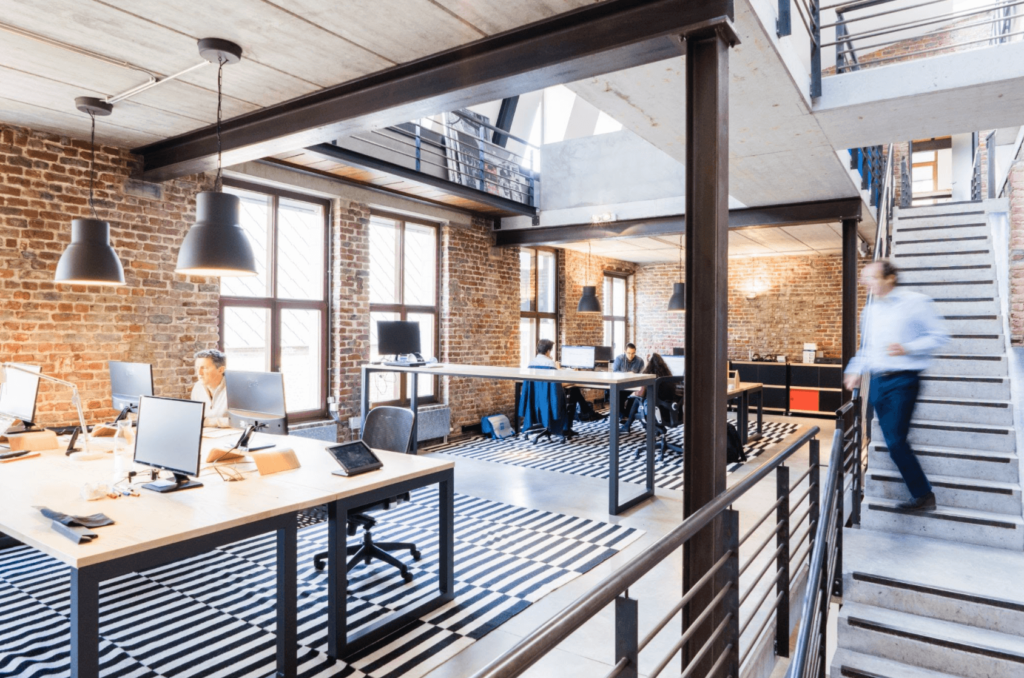
Energy-efficient Lighting Options
In the quest for enhancing productivity while managing operational costs, energy-efficient lighting options have become a cornerstone of modern office design. These lighting solutions not only contribute to environmental sustainability but also offer significant savings on electricity bills. LED lighting, for example, has emerged as a leading choice in energy-efficient technology. LEDs consume significantly less energy than traditional incandescent or fluorescent bulbs and have a much longer lifespan, reducing the frequency of replacements and maintenance costs. Additionally, LEDs are available in various color temperatures, allowing businesses to tailor lighting environments to suit specific tasks and times of day. By investing in energy-efficient lighting, companies can create a more sustainable workplace that supports productivity without compromising on quality.
Cost-benefit Analysis
The financial implications of adopting energy-efficient lighting extend beyond mere cost savings on utility bills. A comprehensive cost-benefit analysis reveals that while the initial investment in energy-efficient lighting solutions, such as LEDs or smart lighting systems, may be higher, the long-term benefits far outweigh these upfront costs. Reduced energy consumption leads to lower operational expenses, which can significantly impact a company’s bottom line over time. Furthermore, enhanced lighting quality can lead to increased employee productivity and reduced absenteeism, as a well-lit environment contributes to better focus and overall well-being. Organizations that incorporate such lighting solutions often experience a favorable return on investment, making it a financially sound decision.
Technological Advancements
The field of lighting technology is continually evolving, with new advancements offering innovative ways to enhance efficiency and productivity in the workplace. Smart lighting systems, for example, utilize sensors and automation to adjust lighting levels based on occupancy and natural light availability, ensuring optimal illumination while minimizing energy waste. These systems can be integrated with building management platforms, allowing for centralized control and monitoring of lighting across large office spaces. Additionally, advancements in human-centric lighting, which tailors lighting conditions to support human biological rhythms, are gaining traction. These systems dynamically adjust color temperatures and intensity throughout the day to mimic natural light cycles, promoting alertness and well-being. By embracing these technological advancements, businesses can create adaptive lighting environments that not only enhance efficiency but also improve the overall employee experience.
Real-world Examples
Case Study: Monteco Coworking Space
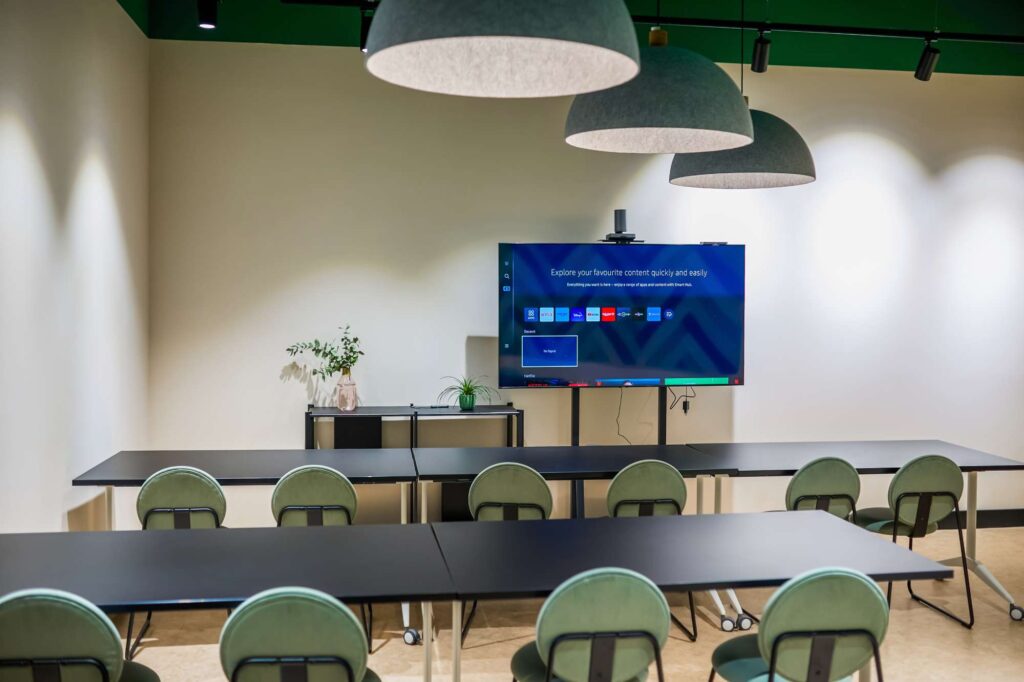
In the picturesque town of Budva, Monteco Coworking Space serves as an exemplary model of how thoughtful lighting design can enhance productivity and well-being in shared work environments. Monteco integrates both natural and artificial lighting to create an inviting and efficient workspace. Large windows maximize the influx of natural light, which is supplemented by strategically placed LED fixtures that provide consistent illumination throughout the day. The lighting design at Monteco is tailored to accommodate various work styles, with task lighting available for focused activities and ambient lighting creating a relaxed atmosphere for collaborative work. This blend of lighting solutions not only optimizes visual comfort but also fosters a vibrant and dynamic work environment, catering to the diverse needs of its members.
Corporate Office Implementations
Corporate offices around the world are increasingly recognizing the importance of lighting in driving employee productivity and satisfaction. Leading companies have implemented advanced lighting systems that are both energy-efficient and adaptable to the needs of their workforce. For instance, a major technology firm redesigned its office lighting to incorporate smart lighting systems that adjust based on occupancy and available daylight. These systems are programmed to maintain optimal brightness levels while reducing energy consumption. The organization also invested in human-centric lighting solutions that adjust color temperatures throughout the day to support employees’ circadian rhythms. These implementations have resulted in noticeable improvements in employee focus and a reduction in energy costs, demonstrating the value of integrating modern lighting technologies in corporate settings.
Remote Work Setups
As remote work becomes more prevalent, individuals are tasked with creating effective home office environments that support their productivity. Lighting plays a crucial role in this context, as remote workers must often adapt existing residential lighting to meet professional needs. Many remote workers are investing in adjustable desk lamps and full-spectrum LED bulbs to enhance their home workspaces. These lighting solutions allow for customization of light intensity and color temperature, providing the flexibility to create an environment conducive to various tasks. For those with limited natural light, light therapy lamps can mimic daylight, helping to maintain focus and regulate mood. By prioritizing effective lighting in their home offices, remote workers can create a productive setting that rivals traditional office environments.
Recommendations for Optimal Lighting
Choosing the Right Lighting for Your Space
Selecting the appropriate lighting for a workspace involves understanding the unique requirements and characteristics of the environment. Factors such as the size of the space, the nature of the tasks performed, and the existing architectural features all play a role in determining the best lighting solutions. For instance, open-plan offices benefit from a combination of ambient and task lighting to provide general illumination while supporting individual work needs. In contrast, smaller, enclosed offices may require more focused lighting solutions to enhance visibility and comfort. It is crucial to choose lighting fixtures that minimize glare and distribute light evenly to prevent eye strain and create a comfortable visual environment. Additionally, selecting lighting with adjustable brightness and color temperature can accommodate different work activities and personal preferences, ensuring a versatile and productive workspace.
Balancing Natural and Artificial Light
Achieving the right balance between natural and artificial light is essential for creating a productive office environment. Natural light is highly beneficial, as it enhances mood and energy levels, but it is not always available or consistent throughout the day. Therefore, it is important to supplement natural light with artificial lighting that can mimic its qualities. This can be achieved through the use of LED fixtures with adjustable color temperatures that provide a daylight-like quality. Positioning workstations near windows can maximize exposure to natural light, while blinds or shades can help control glare and prevent overheating. By carefully integrating natural and artificial lighting, offices can maintain a harmonious and well-lit environment that supports productivity and well-being.
Expert Tips and Best Practices
Experts in lighting design and workplace productivity offer several tips and best practices for optimizing office lighting. First, it is recommended to conduct a lighting audit to assess the current lighting conditions and identify areas for improvement. This audit can guide the selection and placement of lighting fixtures to ensure even distribution and optimal brightness levels. Incorporating dimmable lighting systems allows for flexibility in adjusting light levels according to the time of day and specific task requirements. Additionally, using lighting controls, such as sensors and timers, can enhance energy efficiency by ensuring lights are only in use when needed. Finally, regular maintenance of lighting fixtures, including cleaning and replacing bulbs, is essential to maintain consistent lighting quality. By following these expert recommendations, businesses can create a lighting strategy that enhances employee productivity and satisfaction.
Conclusion
Throughout this exploration of office lighting and its impact on employee productivity, several critical insights have emerged. Lighting is not merely a functional aspect of workspace design but a fundamental component that influences how employees perform and feel. Natural lighting has been identified as a powerful enhancer of mood and cognitive performance, while energy-efficient artificial lighting options such as LEDs provide sustainable solutions that mimic daylight and reduce operational costs. The integration of task and ambient lighting ensures that specific work requirements are met, promoting focus and reducing distractions. Additionally, understanding the psychological impact of lighting on mood, particularly concerning Seasonal Affective Disorder, underscores the necessity of thoughtful lighting design. Real-world applications, from coworking spaces like Monteco to corporate offices, illustrate the tangible benefits of optimized lighting systems. By leveraging technological advancements, businesses can create adaptive environments that cater to the diverse needs of their workforce.
Encouragement for Informed Decisions
With the knowledge of how lighting affects productivity and well-being, businesses and individuals are encouraged to make informed decisions when designing or upgrading their workspaces. Recognizing the diverse needs of employees and the unique characteristics of each workspace is crucial in selecting the right lighting solutions. Decision-makers should prioritize conducting thorough assessments of their current lighting conditions and explore innovative technologies that offer flexibility and efficiency. By investing in high-quality lighting systems, organizations can enhance their work environments, leading to increased productivity, satisfaction, and overall success. As the understanding of workplace dynamics evolves, so too should the approach to lighting, ensuring that it remains a vital tool in creating productive and health-promoting spaces.



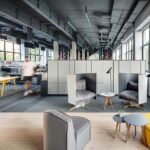
Leave a Reply